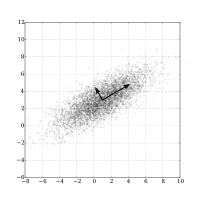
Photo from wikipedia
Whole-genome sequencing (WGS) is the method of choice for bacterial subtyping and it is rapidly replacing the more traditional methods such as pulsed-field gel electrophoresis (PFGE). Here we used the… Click to show full abstract
Whole-genome sequencing (WGS) is the method of choice for bacterial subtyping and it is rapidly replacing the more traditional methods such as pulsed-field gel electrophoresis (PFGE). Here we used the high-resolution core genome single nucleotide variant (cgSNV) typing method to characterize clinical and food from Salmonella enterica serovar Heidelberg isolates in the context of source attribution. Additionally, clustered regularly interspaced short palindromic repeats (CRISPR) analysis was included to further support this method. Our results revealed that cgSNV was highly discriminatory and separated the outbreak isolates into distinct clusters (0–4 SNVs). CRISPR analysis was also able to distinguish outbreak strains from epidemiologically unrelated isolates. Specifically, our data clearly demonstrated the strength of these two methods to determine the probable source(s) of a 2012 epidemiologically characterized outbreak of S. Heidelberg. Using molecular cut-off of 0–10 SNVs, the cgSNV analysis of 246 clinical and food isolates of S. Heidelberg collected in Québec, in the same year of the outbreak event, revealed that retail and abattoir chicken isolates likely represent an important source of human infection to S. Heidelberg. Interestingly, the isolates genetically related by cgSNV also harbored the same CRISPR as outbreak isolates and clusters. This indicates that CRISPR profiles can be useful as a complementary approach to determine source attribution in foodborne outbreaks. Use of the genomic analysis also allowed to identify a large number of cases that were missed by PFGE, indicating that most outbreaks are probably underestimated. Although epidemiological information must still support WGS-based results, cgSNV method is a highly discriminatory method for the resolution of outbreak events and the attribution of these events to their respective sources. CRISPR typing can serve as a complimentary tool to this analysis during source tracking.
Journal Title: Frontiers in Microbiology
Year Published: 2020
Link to full text (if available)
Share on Social Media: Sign Up to like & get
recommendations!